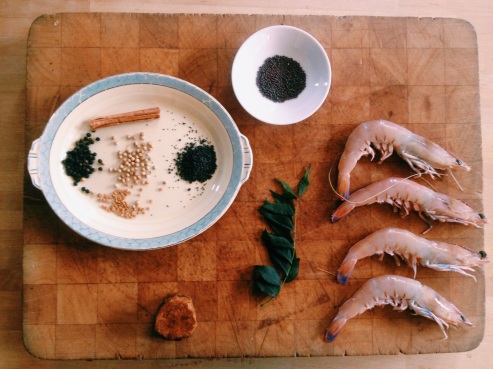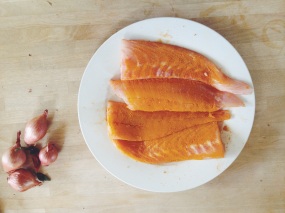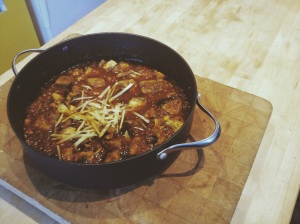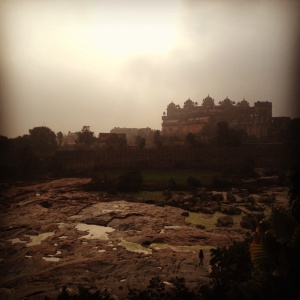I am finally back home in Melbourne!
Being back in this southern city is of course incredibly exciting even if I had to come from beautiful 38 degree Perth and step out of the airport into temperatures in their low 20’s. One of my first orders of business (after a quick reunion with the beautiful boyfriend and a perfunctory shower) was to head to the Queen Victoria Markets to check out what looked irresistible.
The morning I got there the markets were at full swing and at their atmospheric best. I like dressing up to go the markets, there is a sense of excitement and occasion for me which I think deserves a bit of effort. So with a kilo of jewellery clanking on my fingers and earlobes I stomped the crowded paths trying to aggressively assert how local and hip and familiar I was.
Somehow in the midst of my preening and posturing I managed to actually do a bit of shopping and stumbled across a surprising gem. One stall had a big gleaming pile of wickedly purple blackcurrants looking for all the world like Morticia’s jewellery box.
Perhaps it was the possibility that I could turn these blackcurrants into a fabulous pair of earrings that drew me in and regardless of the fact that I had never cooked with or tasted these delights I bought half a kilo.
By the time I got home it was 300g and I was already fantasising about how I could turn these tart berries closely associated with Western Europe into a South Asian treat. Originally I was thinking dessert, but the more berries I ate the more I grew to love the savoury notes in their sourness. I finally decided to make them into a sweet and spicy chatni which I would serve alongside some fried delights like a samosa or my roast broccoli and date pakoras (recipe coming soon!).
This recipe is basically a glorified blackcurrant jam which has been cooked to a stage just before the gelling stage so it remains a little runny. If you like you can make the blackcurrant jam with all the spices except the chaat masala and amchur and add more sugar and have a delicately spiced preserve for breakfast treats!
I had to really use my instincts for this one and I would suggest you use these measurements and timings as guides and that you use your better judgement if you are not convinced something is doing what it should.
The key to this is a good chaat masala whose tartness and complexity really makes the blackcurrants transform.
Blackcurrant and Pepper Chatni – Makes around 1 1/2 cups
2 cups fresh blackcurrants (stemmed and cleaned) – 3/4 cup water – 7 cardomom pods bruised – 7 cloves – 12 black peppercorns – 1 cup sugar – 2 tsp lemon juice – 1 1/2 tsp chaat masala* – 1/2 tsp amchur
- Tie up cardomom, cloves and pepper in a muslin cloth or clean chux to make a glorified teabag.
- Bring blackcurrants, water and muslin spicebag to a boil, reduce heat to medium/low. Cook for 10 minutes or until blackcurrants are soft but still holding their shape.
- Add sugar and 1tsp lemon juice, raise heat slightly to medium and cook until just before gelling point (this should be around 104 degrees Celsius if you have a sugar thermometer) which will be just as the mixture starts to rapidly thicken. This happened for me after about 8 minutes although I am told by my cheffing friend that it should normally happen sooner.
- Once at the appropriate consistency stir in the remaining lemon juice along with the remaining spices. Pour into a clean and sterilised jar.
- Once cool, store in refrigerator. Serve with samosas and a cup of peppery chai.
* Chaat Masala – A tangy spice blend that is usually sprinkled over fried snacks, unripe fruit and used to finish some meals. Can be bought from Indian groceries but is very satisfying to make. Will be posting the recipe shortly.
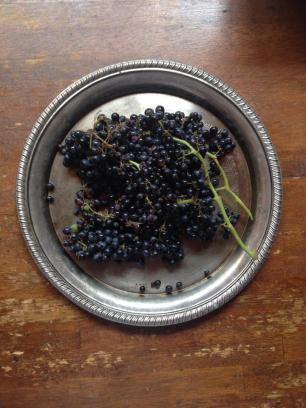

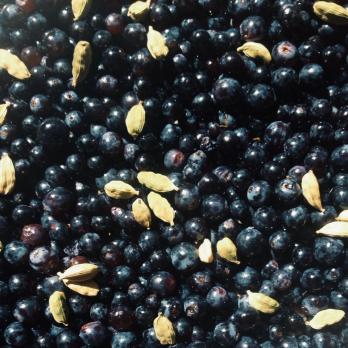
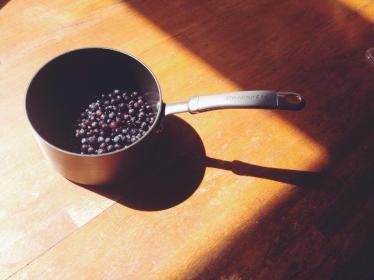

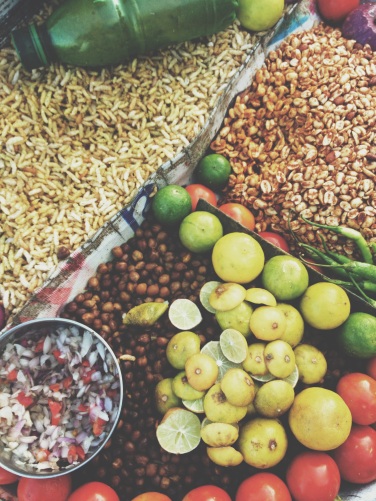
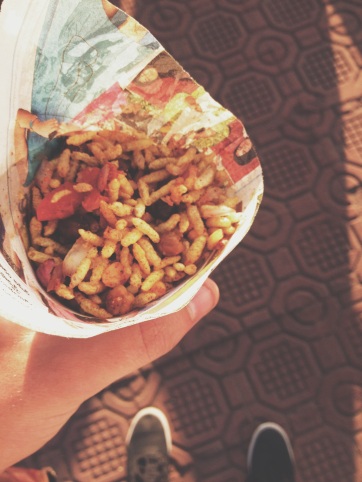
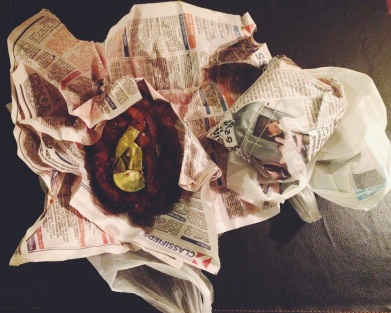
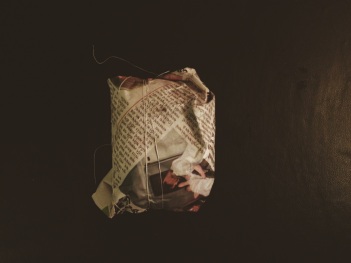
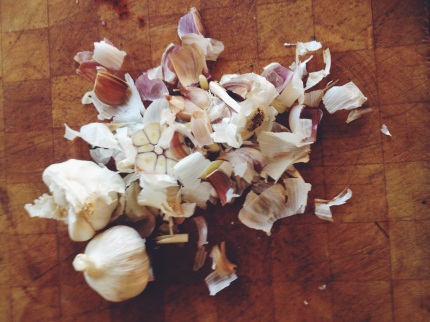 When someone says the word chutney, my mind instantly jumps to the thick, oversweet, cloying relishes that my Dad used to eat which bore more resemblance to jam than to anything else. This style of chutney is a result of the Anglo reinterpretations (misinterpretations?) of the Indian chatni (chatni is a truer transliteration and I will use it to differentiate my South Asian recipes from their Anglo cousins).
When someone says the word chutney, my mind instantly jumps to the thick, oversweet, cloying relishes that my Dad used to eat which bore more resemblance to jam than to anything else. This style of chutney is a result of the Anglo reinterpretations (misinterpretations?) of the Indian chatni (chatni is a truer transliteration and I will use it to differentiate my South Asian recipes from their Anglo cousins).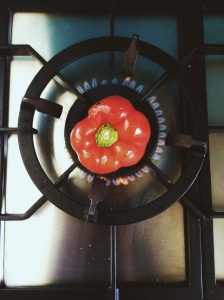
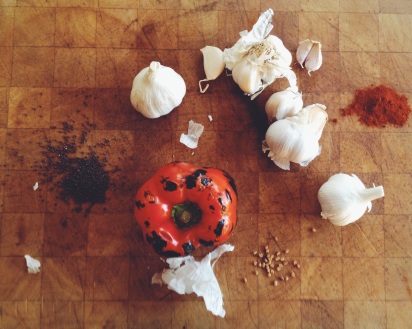
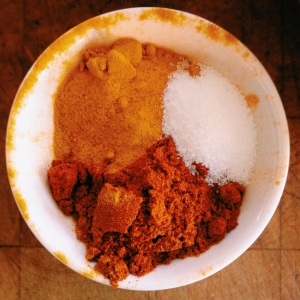


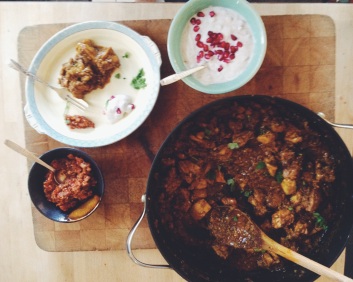
 I recently finished working at a fine dining establishment in East Melbourne as a waiter. What I got out of the job was not how to fold napkins properly, or how to hang a fur coat or polish a crystal glass, but rather it was peering over the pass that taught me the most.
I recently finished working at a fine dining establishment in East Melbourne as a waiter. What I got out of the job was not how to fold napkins properly, or how to hang a fur coat or polish a crystal glass, but rather it was peering over the pass that taught me the most.